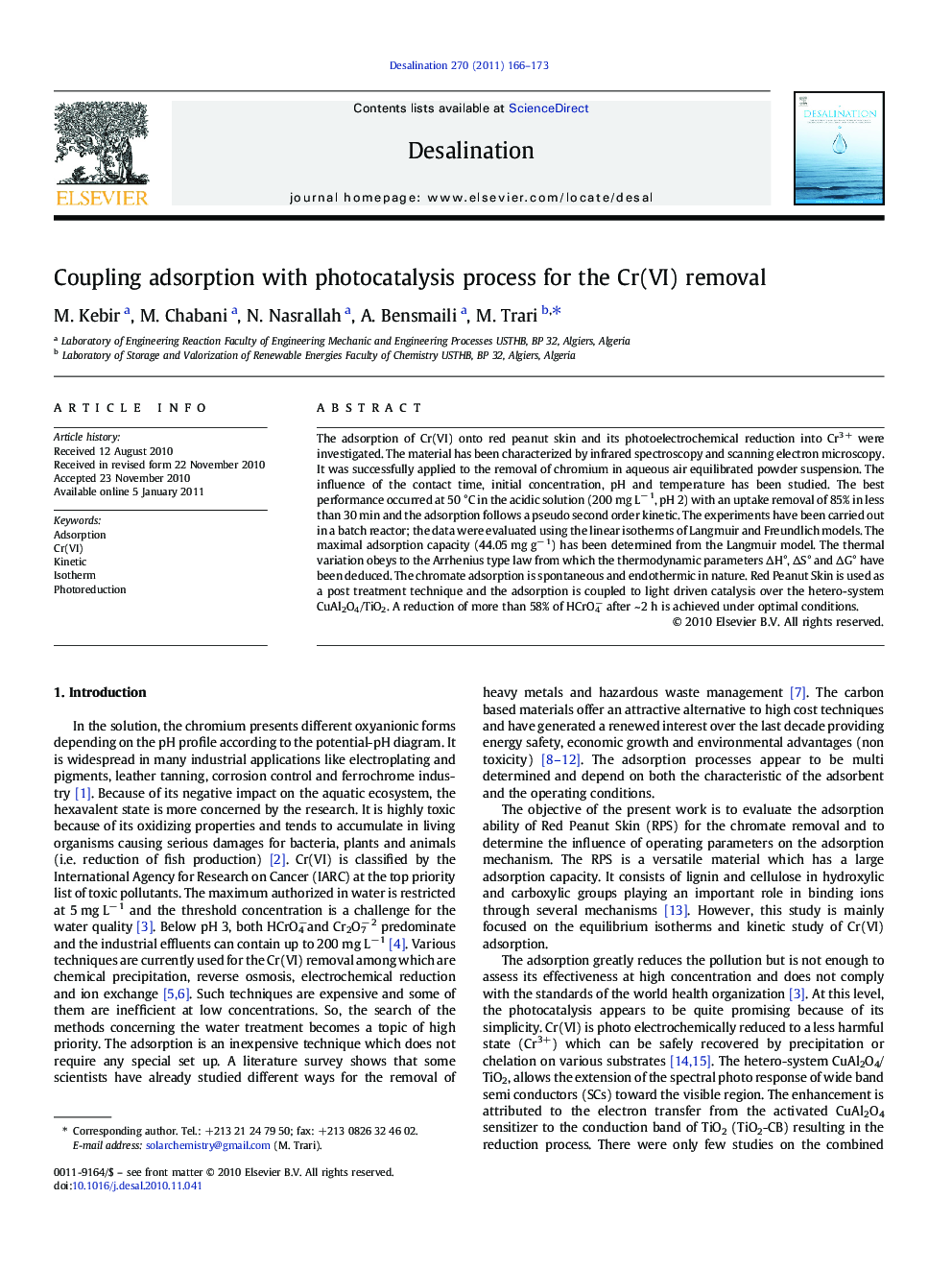| Article ID | Journal | Published Year | Pages | File Type |
|---|---|---|---|---|
| 625265 | Desalination | 2011 | 8 Pages |
The adsorption of Cr(VI) onto red peanut skin and its photoelectrochemical reduction into Cr3+ were investigated. The material has been characterized by infrared spectroscopy and scanning electron microscopy. It was successfully applied to the removal of chromium in aqueous air equilibrated powder suspension. The influence of the contact time, initial concentration, pH and temperature has been studied. The best performance occurred at 50 °C in the acidic solution (200 mg L− 1, pH 2) with an uptake removal of 85% in less than 30 min and the adsorption follows a pseudo second order kinetic. The experiments have been carried out in a batch reactor; the data were evaluated using the linear isotherms of Langmuir and Freundlich models. The maximal adsorption capacity (44.05 mg g− 1) has been determined from the Langmuir model. The thermal variation obeys to the Arrhenius type law from which the thermodynamic parameters ΔH°, ΔS° and ΔG° have been deduced. The chromate adsorption is spontaneous and endothermic in nature. Red Peanut Skin is used as a post treatment technique and the adsorption is coupled to light driven catalysis over the hetero-system CuAl2O4/TiO2. A reduction of more than 58% of HCrO4− after ~ 2 h is achieved under optimal conditions.
Research Highlights► The red peanut skin has been successfully tested for the chromium removal. ► The Langmuir isotherms fitted the adsorption best. ► Maximum adsorption capacity of chromium was achieved at pH~1. ► The coupled process lowers the concentration below that required by the world health organization.
